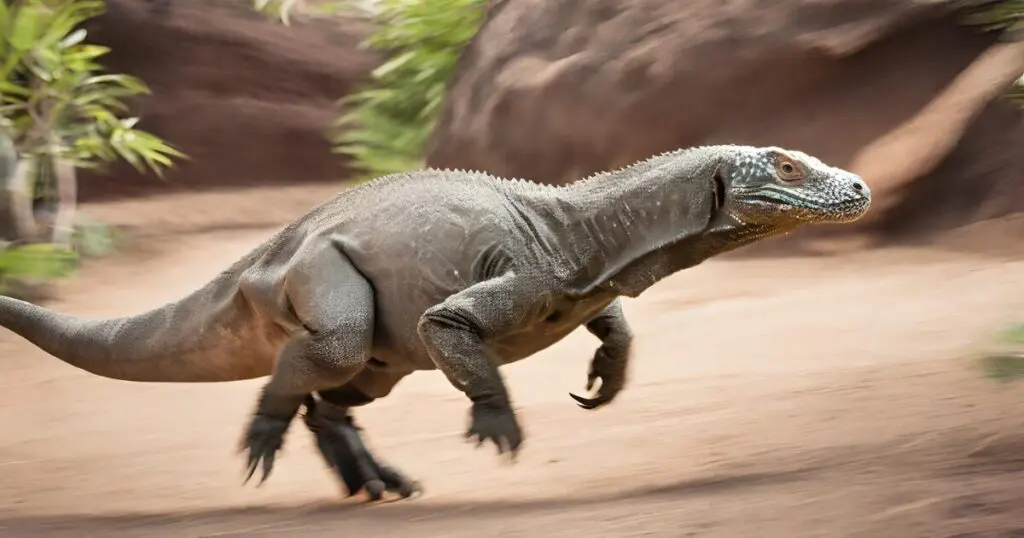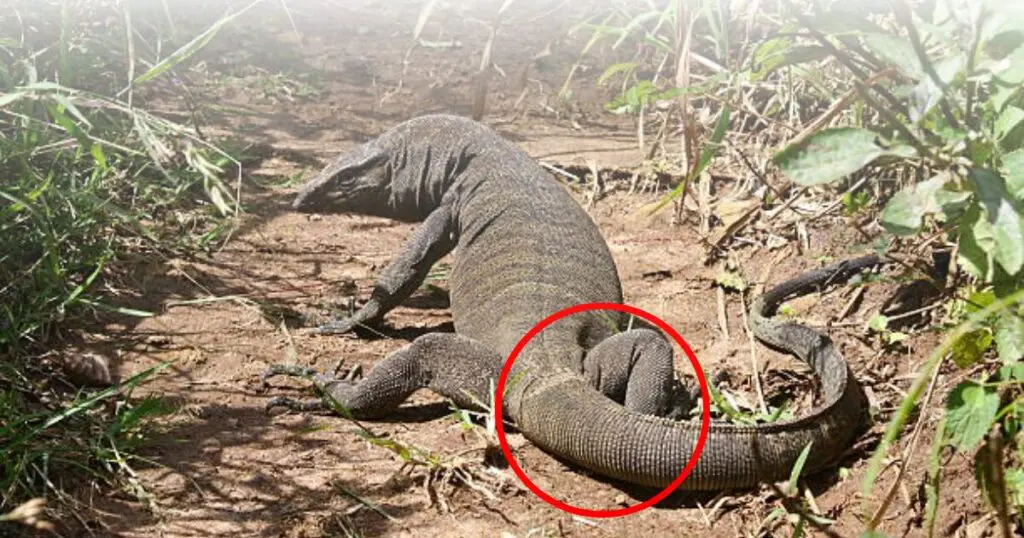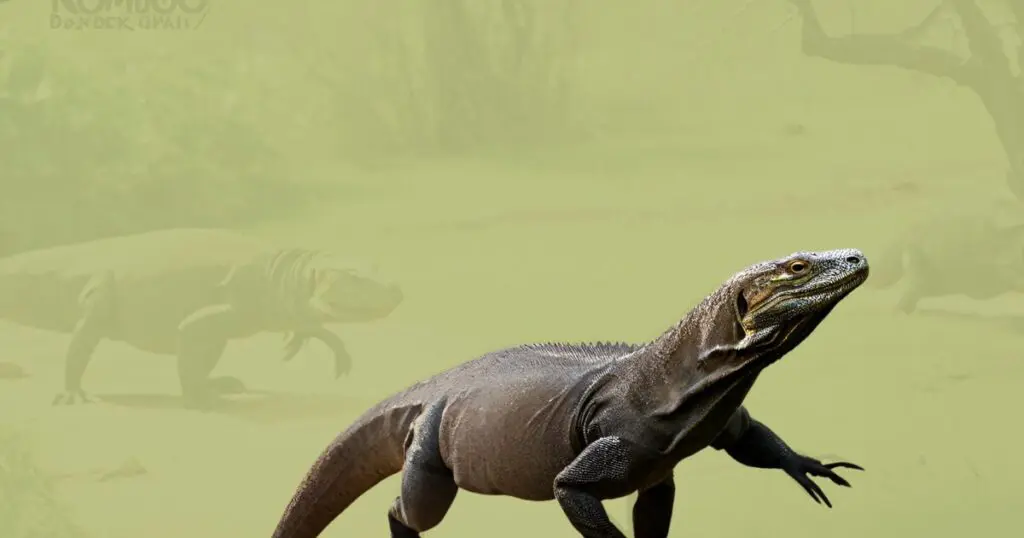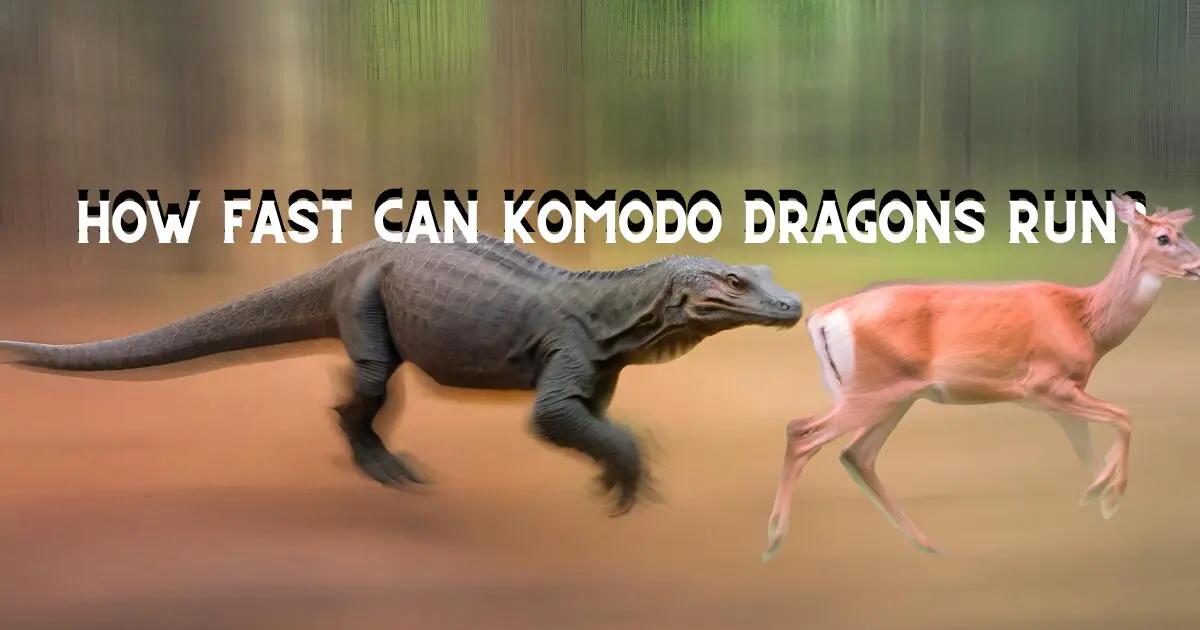Komodo dragons are not the fastest runners in the ecosystem. Most of their prey run faster than them. Therefore, they don’t run after to kill their prey. These wise lizards have found better options. Still, you might be curious, “How fast can Komodo dragons run?”
The average running speed for Komodo dragons is about 20 KPH, an impressive number for their size. These 10-foot giants can weigh up to 300 pounds. With so much weight, they can still put on a good race for a short distance. After a hundred meters or two, they stop running.
Let’s find out how these giant lizards can run so fast. And, of course, whether it is safe for you to run around them.
Key points of this article:
- Komodo dragons can burst into fast speed for a short time.
- They can also swim in water
- Komodo dragons can also youtube humans
- These lizards usually run to escape or attack other prey
- Their big size is the reason why they cannot run fast.
Can Komodo Dragons Run?

Of course, Komodo dragons can run quite fast. These reptiles can reach up to 20 kilometers per hour in quick sprints. It comes in handy in hunting as they are ambush hunters.
Komodo dragons wait patiently for their prey. They wait till the prey is within the striking range. Once it has the animal in its position, the dragon will jump on the animal. Komodo dragons teeth are strong and sharp enough to tear into any animal’s skin.
Anyway, when it comes to running, these dragons are not the fastest. Many other animals can reach higher speeds. The specialty of these lizards is that they can reach their maximum speed in a very short time. This higher acceleration gives them a hunting advantage.
What Helps Komodo Dragons Dun So Fast?
Have you ever seen them bursting into some animals? God! That happens in a split second. How do these giants move so swiftly?
1. Powerful Legs and Strong Muscles
Komodo dragons have strong legs and well-developed muscles. Their hind legs are particularly strong and allow them to propel themselves with a significant force. Thanks to their respiratory system, it delivers oxygen to their body during a sprint.
2. Flexible Spine and Tail

The spines of Komodo dragons are surprisingly flexible. Though it is quite unlike other reptiles, it gives them a good advantage. The flexibility allows them to generate powerful pushing motion with their legs. The tail also has a role in it. It acts as a counterbalance and helps them maintain balance and stability.
3. Their Claws
Well, these classes are actually not for speedrunning. Still, the sharp claws of a Komodo dragon contribute to their short bursts. These claws provide excellent traction and allow them to dig into the ground to push off with maximum force for a powerful start.
4. Physiological Adaptation
The impressive bursts of speed displayed by Komodo dragons are fueled by a specific physiological adaptation. Being reptiles, Komodo dragons are endothermal. They cannot maintain their body temperature. Instead, they rely on the environment.
It is actually a benefit for them. Komodos do not have to spend their energy in maintaining body temperature. They can use that energy for a quick burst of speed. Their large lungs take in ample oxygen during these sprints and allow their muscles to function at peak captivity for a short period.
How Long Can Komodo Dragons Run?
Komodo dragons are sprinters, not marathoners. They can reach up to 20 kph speed but cannot maintain this speed for long. They use this burst of speed to close the gap on prey or escape immediate danger.
The exact duration of their sprint depends on factors like size and terrain. However, it is likely only a few seconds. Their bulky bodies and cold-blooded nature make them tire quickly. So, while they might surprise you with their initial speed, they won’t be chasing you down for long distances.
You can see in this video that the Komodo does not run for too long at its best speed.
Why Can They Not Run for Long?
A number of reasons restrict their ability to run for a long time. Let’s have a look at them in brief:
- Their impressive size works against them in the long run. Carrying all that weight requires significant energy expenditure.
- Unlike warm-blooded creatures, Komodo dragons don’t generate their own internal heat. This limits their overall energy reserves for sustained activity.
- Their muscles are not ideal for long runs. The tire quickly during extended exertion.
- Their lungs are efficient for short bursts but not for continuous oxygen demands in the long run.
- Komodo dragons rely on stored energy reserves for bursts of speed. Long runs quickly deplete these reserves, forcing them to stop.
When Do Komodo Dragons Run?
You won’t notice Komodo dragons run much. These lizards do not like to run. They may only run for two occasions, such as:

1. During Hunting
The primary reason for them running is to catch prey. However, they do not start chasing their prey. Instead, they would wait for a long time to let the prey come near them. In the meantime, they will hide and take camouflage.
Komodo dragons are also skilled scavengers. Their keen sense of smell allows them to detect carrion from miles away. If another predator has made a kill, a Komodo dragon might use its burst of speed to reach the carcass first. It is the rule of the jungle. If you can claim the food first, the food is yours.
2. To Escape
Despite their size, Komodo dragons are not invincible. There are not many animals that can kill Komodo dragons. Still, there are animals like crocodiles, tigers, and large snakes that prey on these apex predators.
Komodo dragons do not want to pick fights with their predators. They tend to avoid direct interaction as much as they can. If they are at the waterside and suddenly notice a crocodile, they will burst into a sprint to escape. They are not known as risk-takers.
The same thing happens when they notice venomous snakes or tigers. They would quickly get back to their burrow and take camouflage to avoid their hunters’ sight.
Can Humans Outrun Komodo Dragons?

Here comes the big question: what would you do if you came face to face with a Komdo? Should you climb trees? That’s not such a good idea since young and juvenile Komodo dragons can climb trees.
It leaves you with a second choice. Running!
But Komodo dragons are quicker than humans in surpassing short distances. Therefore, you must not let them approach you too close. You can start running in zig-zag to confuse them. It is not easy to fool these lizards, though.
If you already have a long-distance advantage, running would be a good saving option. Otherwise, you can use tree branches to scare them off. Aim for their faces. But again, please note that these are just theories. You must try to avoid going too near them. It is not safe. Experts say that if they are near you, you are doomed!
FAQ
Some relevant questions that might interest you are: What are some of the things about Komodo dragons?
1. Can Komodo Dragons Run in Water?
Komodo dragons can swim in water. But if you are asking if they can run, yes, they can for a short distance. If the water is much deeper, they would rather swim than run. They can even navigate currents and swim between islands in their habitat.
2. Can Komodo Dragons Run Upwards on a Hill?
Yes, Komodo dragons can run uphill! Their strong legs and sharp claws provide traction, allowing them to climb and even chase prey up inclines. Nonetheless, they are not as good as uphill runners on plain ground.
3. Will Komodo Dragon Run After A Car?
No, unlikely. Komodo dragons are sprinters, not built for chases. They’d only use their burst of speed for short distances to catch prey or escape immediate danger. A car moving away would be too fast.
Conclusion
Komodo dragons are good runners and can sprint very quickly. However, they cannot hold their sprint for long. Their giant size restricts their ability to run like a cheetah or a deer.
Still, Komodo dragons are known as one of the deadliest hunters. They have adapted to their limitations and have invented a good hunting approach. You must not go much near them as it would be next to impossible to outrun them. Stay in the distance, stay safe!
